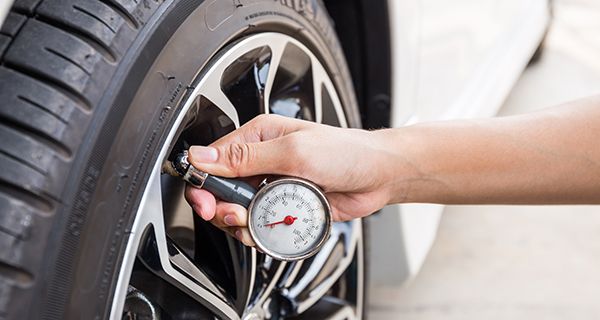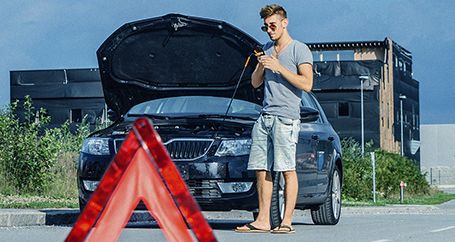
Answer Keeping your tires properly inflated is one of the best ways to prevent a flat tire. All tires lose some air pressure over time, and under-inflated tires are one of the most common causes of flat tires. Why? Because underinflated tires tend to wear faster and unevenly, which can not only cause flat tires but also tread separation, blowouts and loss of control on the roadway.
Don’t rely on a visual inspection to check if your car’s tires have enough air. Tires with stiffer sidewalls can look fine when underinflated, and tires with soft sidewalls are designed to bulge slightly, which can make them appear underinflated when they aren’t. The National Highway Transportation and Safety Administration recommends using a tire pressure gauge to conduct regular checks.
- Find your car’s recommended tire pressure, either on the labels on the edge of the driver’s side door or in your owner’s manual. Use the pressure recommended by the car’s manufacturer, not what’s listed on the tire itself, which is the maximum the tire can take and still be safe. If a range is recommended, use the highest figure.
- Use a tire pressure gauge to measure the pressure in all four tires. Measure when the tires are cold — when the car hasn’t been driven for at least six hours. Typically, tires should run at 32–36 pounds of air pressure per square inch. Maximum allowable pressure can be around 44 psi.
- If the pressure is low in any tire, add air. If the pressure is too high in any tire, press the tire valve stem with your tire gauge to release air slowly.
- Don’t forget to check your spare tire, too. Compact spare tires may have their own recommended pressure, often higher than your full-size tires.
More tips to help prevent flat tires
Rotate your tires. Changing tire positions on the wheels can help them wear evenly and prevent excessive and uneven wear, a common cause of flat tires. Check regularly for tread wear, cracks and bulges. If wear is uneven or excessive, have a mechanic check the alignment. When the tread gets low — less than 1/16th of an inch — consider replacing your tires.
Keep an eye out for potholes, rocks and other tire destroyers. A wheel dropping into a hole in the road, or running over a rock or other sharp object, can easily puncture or crack a tire or bend its rim, especially if you’re moving fast. That’s a recipe for a flat tire. Potholes can also throw your wheels out of alignment, leading to wear, and can also damage your steering and suspension, according to the Insurance Information Institute.
Watch your load. Putting too much weight in your car can stress your tires and wear them out quickly. Your car’s maximum load will be listed on the same label on the driver’s door where you found your tire pressure recommendation or in your owner’s manual.
Farmers Car
Insurance
Find out why auto
insurance from
Farmers is a smart
choice.
The information contained in this page is provided for general informational purposes only. The information is provided by Farmers® and while we endeavor to keep the information up to date and correct, we make no representations or warranties of any kind, express or implied, about the completeness, accuracy, reliability, suitability or availability with respect to this article or the information, products, services or related graphics, if any, contained in this article for any purpose. The information is not meant as professional or expert advice, and any reliance you place on such information is therefore strictly at your own risk.
Related articles



